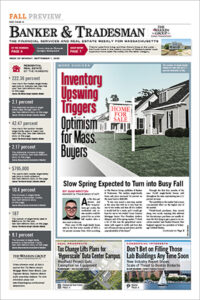
Homebuyers on a tight budget searching for a new home last year could have had luck in Stoneham, Medfield or Gloucester.
Those three towns were among more than a dozen communities in the Boston metropolitan area that saw an increase in affordable homes last year, according to new research.
But despite home-price declines in a majority of communities across Greater Boston last year, there were no huge gains in affordability throughout the region, according to research by the MIT Center for Real Estate in Cambridge.
“In the majority of places, the small change in price is irrelevant. It doesn’t make housing more affordable or increase the number of affordable housing units,” said Henry O. Pollakowski, director of the Center for Real Estate’s Housing Affordability Initiative. “Prices came down a little but the sorts of communities that benefited were just barely unaffordable and they’re now just barely affordable.”
The Center for Real Estate will release the results of its Affordability Housing Index, which examines 141 cities and towns, on Tuesday. The index ranks the cities and towns by calculating the percentage of owner-occupied units that are affordable to a four-person household earning 80 percent of the area median income, or $81,400, but spending no more than 30 percent of income on housing. In calculating the index, researchers also take into account a community’s proximity to jobs and open space, as well as the quality of local schools.
The new index shows that there were about the same number of single-family homes and condominiums that were affordable last year as this year in the Boston metro area. The Center for Real Estate could not provide an exact number of affordable units last week before Banker & Tradesman’s press deadline.
At least 18 communities had a larger number of affordable units in 2006 compared to a year earlier. Prices dropped in all of those communities, from 1 percent in Lawrence to more than 9 percent in Lincoln.
Stoneham, Medfield and Gloucester had the biggest percentage gains in affordable units last year. In Stoneham, there were 215 more affordable units, a 4.5 percent increase from the prior year. Medfield had an additional 123 units that were classified as affordable, a 3.8 percent increase from 2005, while Gloucester’s affordable-unit count climbed 3.3 percent, with 197 more affordable homes.
‘More Benefit’
Pollakowski said some communities rated better in the affordability index not only because home prices eased last year, but because school-quality scores improved. That was true for cities like Lowell and Peabody.
“Some of the communities that had below-average school scores in 2005, in some of those communities school scores increased. That means that because people, homeowners, were getting more benefit because of the schools,” the rankings improved, he explained.
Affluent towns like Weston, Carlisle, Dover, Boxboro, Sherborn and Manchester-by-the-Sea ranked as the least affordable communities.
Only 29 communities, or about 20 percent of the communities that were analyzed, had median home-price increases last year. Price changes in the communities that were rated ranged from a drop of 9 percent to an increase of 8 percent.
Karl Case, an economist and professor at Wellesley College, said home prices shot up tremendously over the last 20 to 25 years, so a slight decline in prices and small increase in incomes isn’t going to have a substantial effect on affordability. In order for Massachusetts to become more affordable, home prices would have to plummet and incomes would have to jump dramatically, according to Case.
“It would take a tremendous bust of the housing market or a burst of incomes,” said Case. “I don’t think it’s going to happen. I think we’re a high-cost area and will remain a high-cost area for some time.”
Massachusetts was considered affordable back in 1984, explained Case. But prices in the Bay State almost tripled between 1984 and 1989 and then they fell in the early 1990s. After the drop-off, prices escalated again. Last year, the statewide median selling price for a single-family home dipped nearly 6 percent and the median condo price slipped 1 percent, according to statistics from The Warren Group, parent company of Banker & Tradesman.
“When [prices] begin to fall, prices are what we call ‘sticky’; that is, sellers will hold out,” Case said.
The results of the index will be discussed at the third annual MIT Center for Real Estate Housing Affordability Conference on Tuesday in the Little Kresge Auditorium at the Massachusetts Institute of Technology. Researchers also will present index ratings for the Providence, R.I., and Springfield metro areas and discussing the findings of a study on comprehensive permit applications in Massachusetts.






